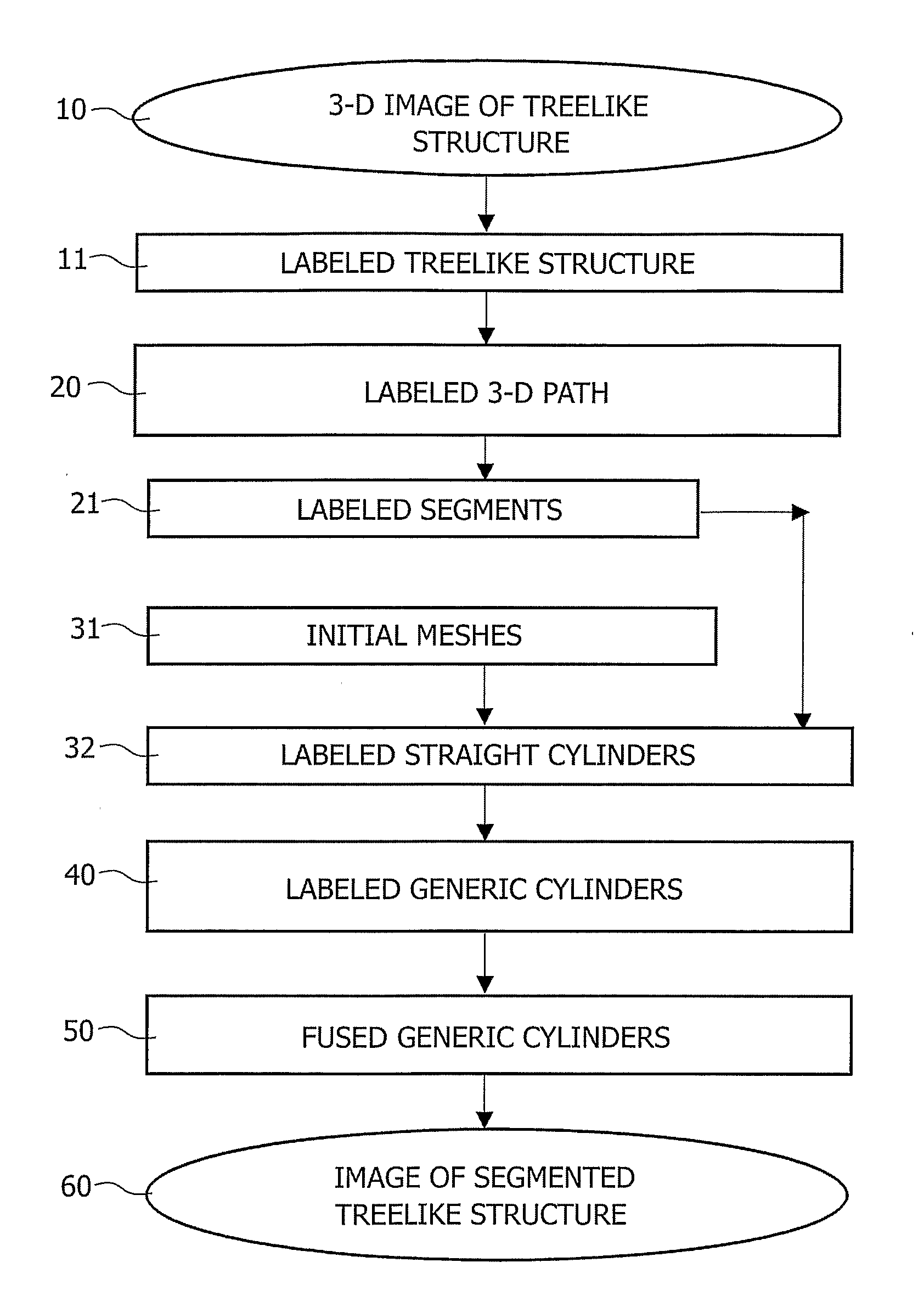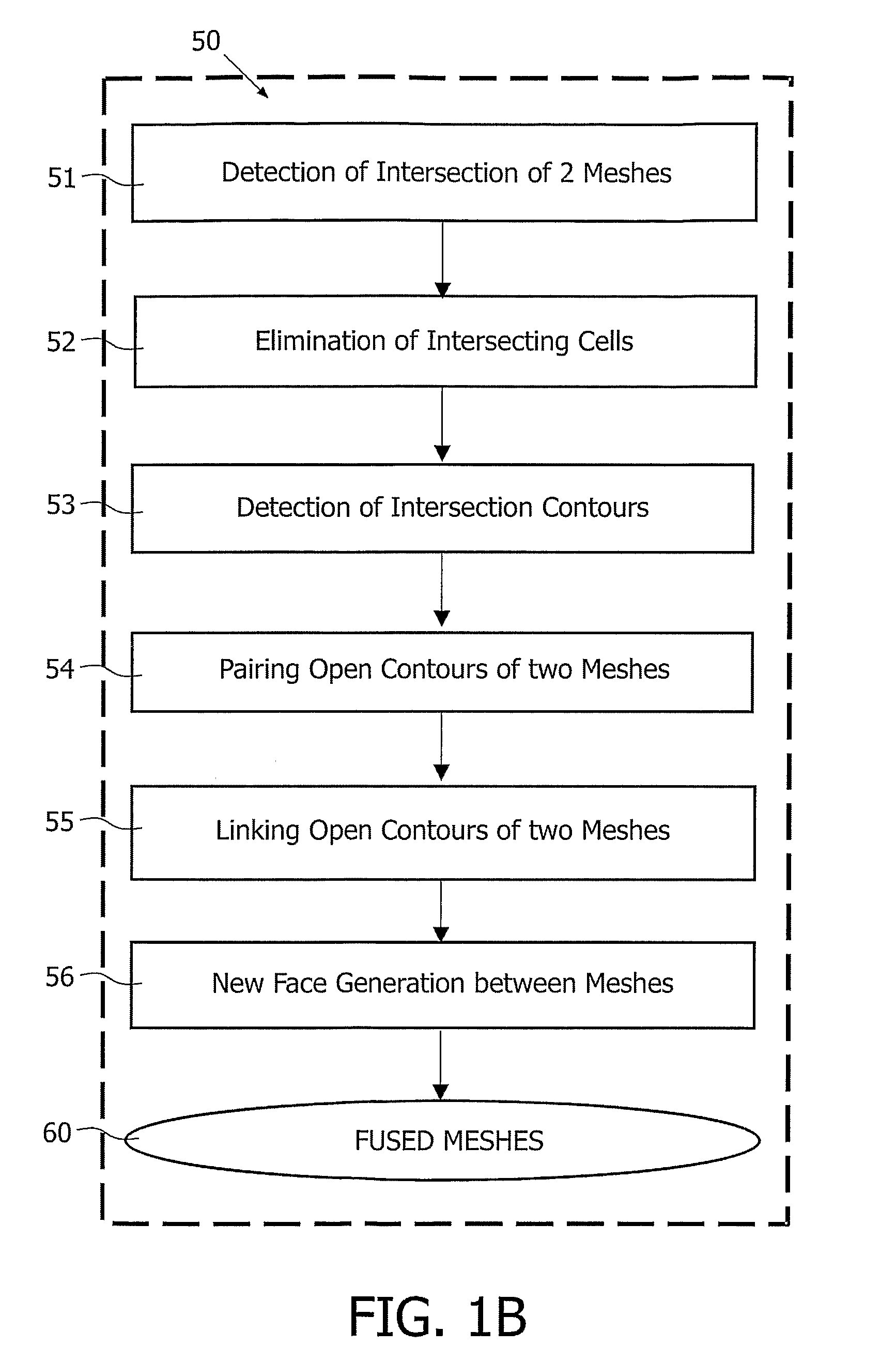Image Processing System for Automatic Segmentation of a 3-D Tree-Like Tubular Surface of an Object, Using 3-D Deformable Mesh Models
a technology of image processing system and tree-like tubular surface, which is applied in the field of image processing system for automatic segmentation of tree-like tubular surface of object, can solve the problems of difficult mapping of discrete deformation model onto the different branches of tree-like tubular organ, gaps or folds or other deformations at embranchment locations, etc., and achieves the effect of minimizing the number of branch fusion operations
- Summary
- Abstract
- Description
- Claims
- Application Information
AI Technical Summary
Benefits of technology
Problems solved by technology
Method used
Image
Examples
Embodiment Construction
[0018]The invention relates to an image processing system with means of processing three-dimensional (3-D) digital image data. FIG. 1A is a diagrammatic representation of an embodiment of this system. The 3-D image 10 may represent in gray levels the three-dimensional surface of a tubular organ called object of interest OI in a noisy image. In order to provide the user with a better view of the object of interest, for instance with respect to the noisy background, this object is segmented. Segmentation permits the user to better study or detect abnormalities of the organ. The images can be acquired by different acquisition means such as ultrasound or X-ray apparatus or by other apparatus known to those skilled in the art.
[0019]The present invention particularly relates to such an image processing system with means of segmentation of a tree-like tubular object of interest, in a three-dimensional image 10 or in a sequence of three-dimensional images. As illustrated by FIG. 6A, the tre...
PUM
 Login to View More
Login to View More Abstract
Description
Claims
Application Information
 Login to View More
Login to View More - R&D
- Intellectual Property
- Life Sciences
- Materials
- Tech Scout
- Unparalleled Data Quality
- Higher Quality Content
- 60% Fewer Hallucinations
Browse by: Latest US Patents, China's latest patents, Technical Efficacy Thesaurus, Application Domain, Technology Topic, Popular Technical Reports.
© 2025 PatSnap. All rights reserved.Legal|Privacy policy|Modern Slavery Act Transparency Statement|Sitemap|About US| Contact US: help@patsnap.com



